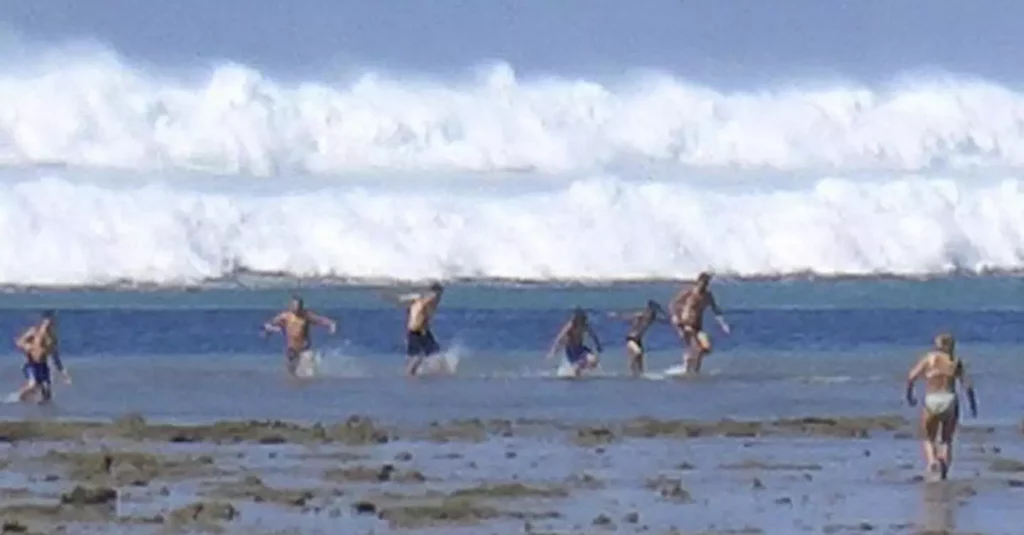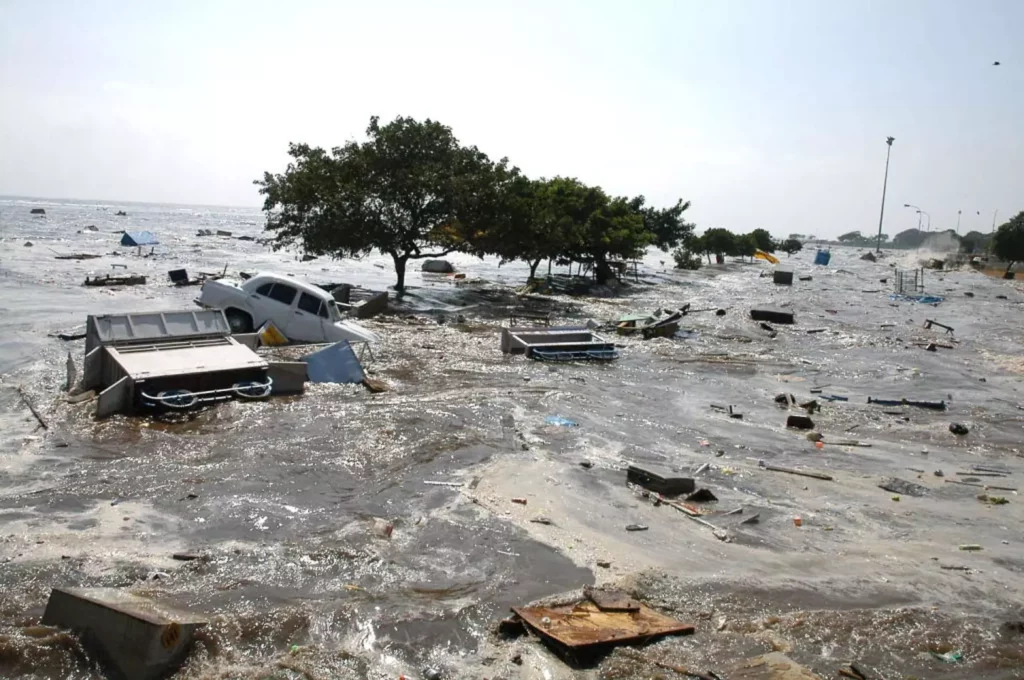A chilling photo of one of the most significant natural disasters in recent history has resurfaced online, capturing the profound destruction and the terror experienced by those affected.
On Boxing Day 2004, the coasts of South and Southeast Asia were struck by one of the deadliest earthquakes and tsunamis of the 21st century.
The devastating disaster claimed over 220,000 lives and injured thousands more, making it the third-largest earthquake since 1900.
It took several years to clear the devastation left behind in affected areas like Indonesia, Sri Lanka, India, and Thailand.
In addition to the death toll, 139,000 homes were destroyed, along with 74,000 hectares of agricultural land, thousands of schools, hundreds of health facilities, and eight airports or airstrips.
But how did this happen?
“It all started when the Indian and Burmese tectonic plates began to subduct about 20 miles beneath the ocean floor.”
“As the tectonic plates collided, they triggered an 800-mile rupture—roughly the length of Texas—resulting in a massive earthquake. This quake is estimated to have released energy equivalent to 23,000 Hiroshima-type atomic bombs.”
On the Richter scale, earthquakes with a magnitude between 7.0 and 7.9 are classified as ‘major earthquakes’ that can cause ‘serious damage.’ Those with a magnitude of 8.0 or higher are considered capable of ‘total destruction’ to communities close to the epicenter.
The 2004 Indian Ocean earthquake registered a magnitude of 9.1.

The collision of the plates caused the ocean floor to uplift by 40 meters, triggering a tsunami that inflicted the majority of the damage. This tsunami devastated several coastal areas, and some tourists inadvertently captured the onset of the disaster on film.
After the earthquake, the sea withdrew, exposing the seabed, while a massive wall of water surged toward the surrounding coastal nations.
The photo above shows the rapid retreat of the water, with people desperately fleeing for safety after spotting the ‘black giant’ tsunami approaching during their holiday.
Near the major city of Banda Aceh in Indonesia, waves soared to heights of 51 meters, resulting in the deaths of nearly 170,000 people in Indonesia alone due to the disaster.
Sri Lanka, located 1,100 miles from Sumatra, experienced the tsunami two hours after the initial wave. The disaster claimed the lives of 35,322 people on the South Asian island.

The tsunami also struck the coasts of Thailand, where many tourists were enjoying a festive period, particularly on the island of Phuket. The disaster claimed the lives of 8,000 people along Thailand’s shores.
Other countries affected by the tsunami included Somalia, the Maldives, Malaysia, Myanmar, and Tanzania.
In total, nearly 230,000 fatalities were reported across the 14 affected countries. The global response included donations amounting to $6.25 billion (£4.7 billion) to aid in the rescue and relief efforts for those impacted by the disaster.
The total number of fatalities included about 9,000 foreign tourists from various countries, making the 2004 Indian Ocean tsunami and earthquake one of the deadliest natural disasters in history.





